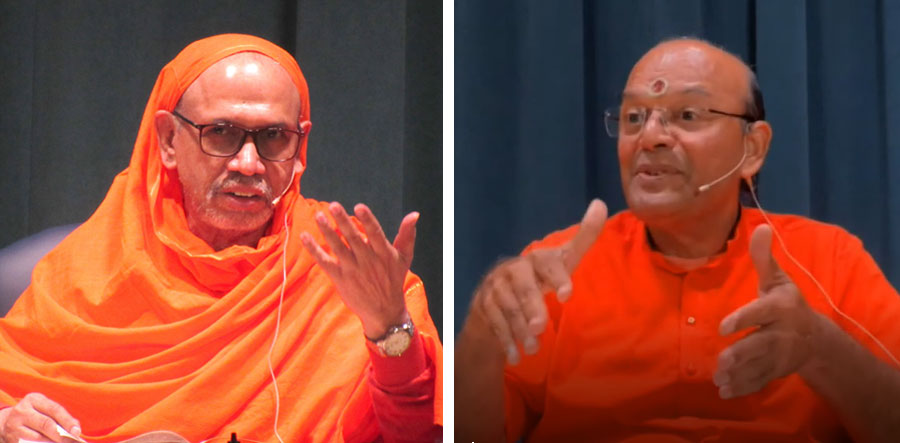

In-Person and Online
TOPICS and TEACHERS:
Vishnu Sahasranama Part 6 (epitome of Vedanta) with Swami Tattvavidananda
Ramayana Sundara Kanda of Valmiki (continuation) with Swami Tattvavidananda
Vidura Niti (Sanskrit grammar study) with Swami Muktatmananda
REGISTRATION (for in-person participation):
Contact Vimala at (570) 656-0193
or
Suddhatma at suddhatma@gmail.com
REGISTRATION (for online participation): CLICK HERE
DESCRIPTIONS:
Vishnu Sahasranama Part 6 (epitome of Vedanta):
The nāmas in the Viṣṇu-sahasranāma reveal the manifest form of Viṣṇu as an avatāra, Viṣṇu as the cause of the world and as the world, and the essential nature of Viṣṇu, which is the truth of oneself. The first two are for worship, the third is for understanding.
Rāmāyaṇa:
Swamiji continues his annual exposition of the Sundara-kāṇḍa of the Rāmāyaṇa. A rich source of Vaidika culture and wisdom, this work informs the thinking and attitudes of every Hindu who has been adequately exposed to it.
Vidura Niti:
This text, which appears in the Udyoga- parva of the Mahābhārata, is the teaching of Vidura, uncle and advisor of the Pāṇḍavas, to his brother Dhṛtarāṣṭra concerning the conduct (nīti) of the wise. These wonderful aphorisms can guide every seeker in how to live a happy and peaceful daily life. The verses will be unfolded with emphasis on learning Sanskrit grammar.